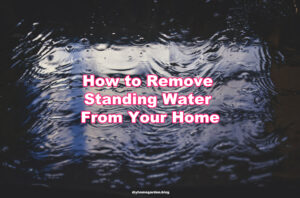How does a sump pump work? You might be wondering about this question but before that. You’ll need to know what precisely this handy device is?
A sump pump is a mechanical unit that is installed in the lowest area of a basement, generally installed in construction sites to keep the underground area of the building dry and prevent it from flooding. Water flows into the pit of the sump pump, and the machine’s job is to pump water away from the soil.
The name might be confusing, but the function is so easy to understand, right?
The Basics of Sump Pump Operation
Now you’ve learned what exactly is a sump pump, now it’s time to move forward to its basics. Sump pumps are generally installed on the underground surface to keep the building dry and save from flood. And as much the installation is concerned.
Sump pumps are installed in a sump pit hole of about 2 feet that is (60 centimeters) deep and 45 centimeters (18 inches) in width. But you might be thinking that how does the sump pump work?
Generally, as the pit fills with water, the motor starts, which pumps the water away from the pit with the help of a pipe connected from your house to a place from where water can quickly drain away. The sump pump also contains a valve called a Check Valve.
Know the difference between manual and automatic units.
As its name suggests, the check valve checks and prevents the back-flowing of the water to your foundation. Most units are automatic, containing a float activator and pressure sensor. As the water exerts more pressure than the air, when the water fills in the pit, it exerts pressure, which causes the motor to turn on. And if you want a sump pump to work manually, so you can buy one.
Despite being useful in a pinch, manual models are not that popular, because of their problems. But mostly, you can start the automatic sump pumps manually if the sensor failed to work.
Household Sump Pumps
You might hear of centrifugal force, right? Here is its physical example. Mainly household sump pumps use a centrifugal pump to move the water from your foundation. When the motor is on, it causes the impeller to turn, which is a fan-like device. With the help of centrifugal force, the impeller spins with fast speed, which forces the water to move to the side of the pipes, which causes water to drain to a suitable place.
The sump pump is run using electricity and is connected by a grounded outlet. But it is always a good idea to install a GFCI (Ground Fault Electric interrupter) for safety purposes because the sump pumps are installed near wet areas.
Talking about the types of sump pumps, there are 2 types of sump pump out of which one is a submersible pump & the other is pedestal pump both are 3 to 2/12 feet. The submersible pump is installed in the bottom and has a grate. The function of the grate is to suck the water when the motor is turned on. From which the water is drained to a suitable place.
The Pedestal Pump generally less expensive but are loud. The motor and pump are placed away from the pit. A pipe is placed underground, which is connected to the pit. When the pit is full of water, the motor starts and pushes the water away from the pit. That is the reason why the pedestal pumps are loud.
How Will I Know if My Sump Pump Needs to Be Replaced?
These units are beneficial because they give flood alarm and also maintain water level. But like the other products, sump pumps also need regular maintenance.
Especially in the spring season and rainy weather, a few minutes of checking maintenance may save your money and the lives around you. Generally, if your sump pump is older than 10 years, then it’s more likely to make noise and etc. If not, then watch for these signs.
Below, see six signs that it is time to maintain your sump pump for its proper functioning:
- Ensure that the sump pump is connected to the GFCI outlets and check the condition of the GFCI chord, if the condition of the chord is not right, then it’s time to replace it.
- Make sure the position of the sump pump is okay. Sometimes due to vibration, the pump falls to either side which can jam the float arm. If the pump is standing, then everything is fine.
- Check the pit, and fill it with the bucket of water and see if the motor starts automatically. If the motor does not start, then it needs to be mended.
- Remove the submersible pump by yourself, and clean the grate because the sucking of water causes other substances like rock and etc to stuck in it.
- Check the tightness of the pipes and their performance. They should at least drain water 20 feet away.
- Ensure that the vent hole of the discharge pipe is clear and has nothing in it.
 Final Thoughts on the Usefulness of a Sump Pump
Final Thoughts on the Usefulness of a Sump Pump
Sump pumps are the most helpful device you can get because they help underground to remain dry and prevent flooding. If the sump pumps are not installed, it’ll affect you in several ways like flooding, moisture can cause Respiratory infection, forms algae on the walls, worse the symptoms of asthma. Devices like these are worth buying.
However, if you need an extra layer of protection from the flooding, it’s better to have a battery backup installed to protect your foundation in the rainy storm days when the power goes out. But you’ll need to check the battery regularly, to see if there’s a need for distilled water, and also if it’s working popularly.
As the battery’s life-span is concerned, if you maintain and took care of the battery, it’ll work for years. As compare to the car battery that lasts for 4-5 years, these special batteries generally last for 18-20 years.
We hoped that we make it easier for you to a sump work its basics.


